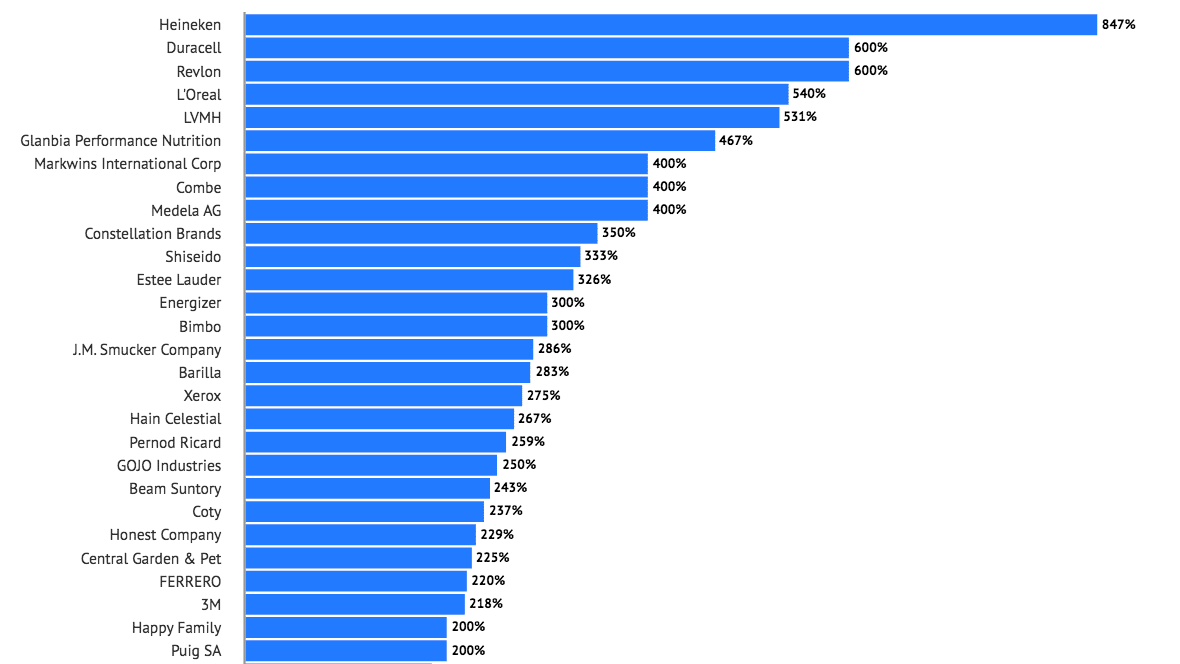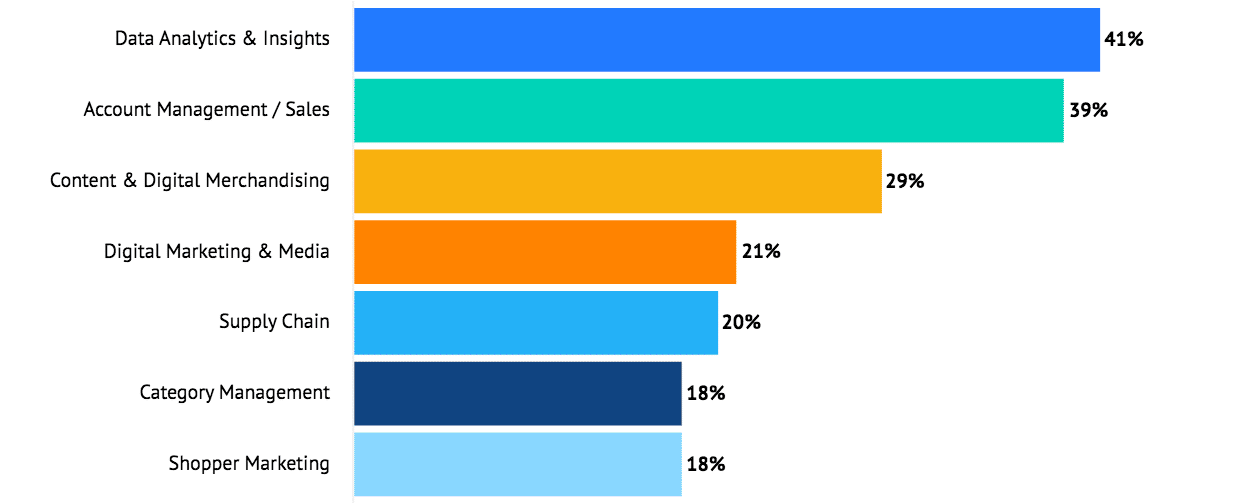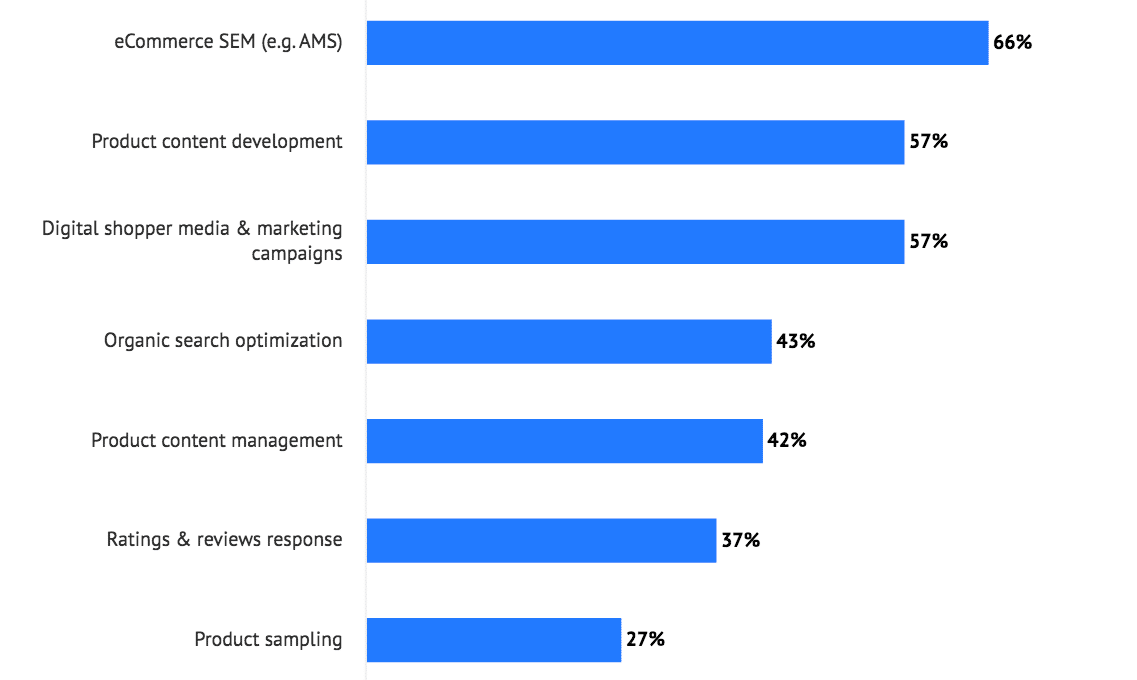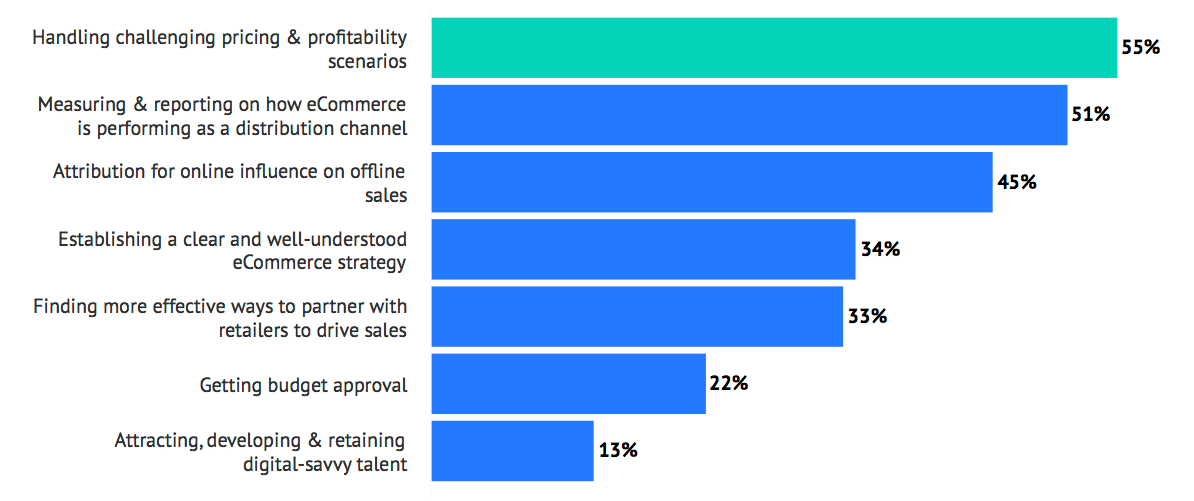The firms’ new 2019 eCommerce Outlook for Brands study found that brands have already made huge investments in e-commerce, expanding their global e-commerce staffing and headcount by 83 percent, on average, versus the prior year—with a significant roster of companies, including Heineken, Duracell, Revlon and LVMH, expanding their digital headcount by as much as 500 percent or more in the past 12 months.
Brands more than doubling their e-commerce headcount (2017-2018):
“e-Commerce teams typically have been largely under-resourced with existing staff having to cover a wide range of brand and category responsibilities. However, our research shows companies are waking up to the fact that this is no longer sustainable and are investing in dedicated specialists and teams to accelerate online growth,” said Andrew Pearl, director of Strategy & Insights EMEA at Profitero, in a news release. “We see this increased investment in headcount also coinciding with investment in data analytics so that brands focus on priority actions and products and not waste these new resources.”
Percent of brands planning to add dedicated headcount in the coming year:
“From Profitero’s research, and our own work with e-commerce leaders in CPG companies, we see the largest obstacle to unlocking true omnichannel opportunities is that most organizations remain primarily optimized to serve brick & mortar retailers,” said Malcolm Pinkerton, VP e-Commerce & Digital Insights at Kantar Consulting, in the release. “To win, brands must break down the silos and work in cross-functional teams—with marketing, sales, consumer engagement, e-commerce, stores, data analysis and supply chain—all working in harmony.”
How brands engage agencies & other third parties (multiple responses allowed):
Top five takeaways from the research:
Brands must act now to build digital capabilities or risk being left behind
Seventy-six percent of brands surveyed are increasing their investment in e-commerce, with 35 percent spending more than 10 percent of their channel revenue on digital tools, solutions and agency support. Brands that fail to keep pace risk losing long-term competitive advantages.
The arms race for e-commerce talent will only intensify
Compared to 2017, the number of people with e-commerce job titles grew by 83 percent, on average. As demand for digital specialists outstrips supply, brands must invest heavily in training and development to bring new e-comm skills to the workforce and talent they already have.
Outsourcing some e-commerce functions is an effective way to get the job done
Brands are leaning on agencies to fill resource gaps and support critical e-comm functions, especially in areas that require heavy specialization and are hard to build in-house. Two-thirds of brands outsource SEO/SEM; half outsource content creation and digital marketing campaigns.
2019 is poised to be the “Year of Data Analytics”
The rise of algorithmic-driven retail means data analytics is no longer a nice to have, but a central commercial function. Seventy-three percent of brands spend a portion of their e-commerce budget on data analytics services; 41 percent of brands plan to expand their e-commerce data analytics headcount in the coming year.
Retail price wars are weighing heavy on brands
Fifty-five percent of brands peg pricing and profitability as their #1 e-commerce challenge to tackle, as Amazon on battles it out with other retailers to be lowest price. One way to deal with profitability pressures is through 1P/3P hybrid selling, which 55 percent of large brands and 74 percent of small brands are pursuing or considering.
Top challenges brands face organizing for e-commerce (top 3 selected):
Download an executive summary of the research here.
For more detailed insights and analyses, register for the Profitero / Kantar Consulting webinar Unlocking eCommerce Growth in 2019 on December 3 at 9am EST/2pm GMT.
For the third consecutive year, Profitero conducted an online survey of brand manufacturers to determine their top organizational priorities, challenges, hiring plans and more as it relates to e-commerce. Fielded from July 2018 to August 2018, responses were collected from a total of 188 respondents in 2018. We also examined the LinkedIn profiles across 150 unique consumer brands globally, identifying all people with an e-commerce-related keyword in their title. Research was conducted between June 2018 and August 2018, and reflects only people who have a LinkedIn profile.







